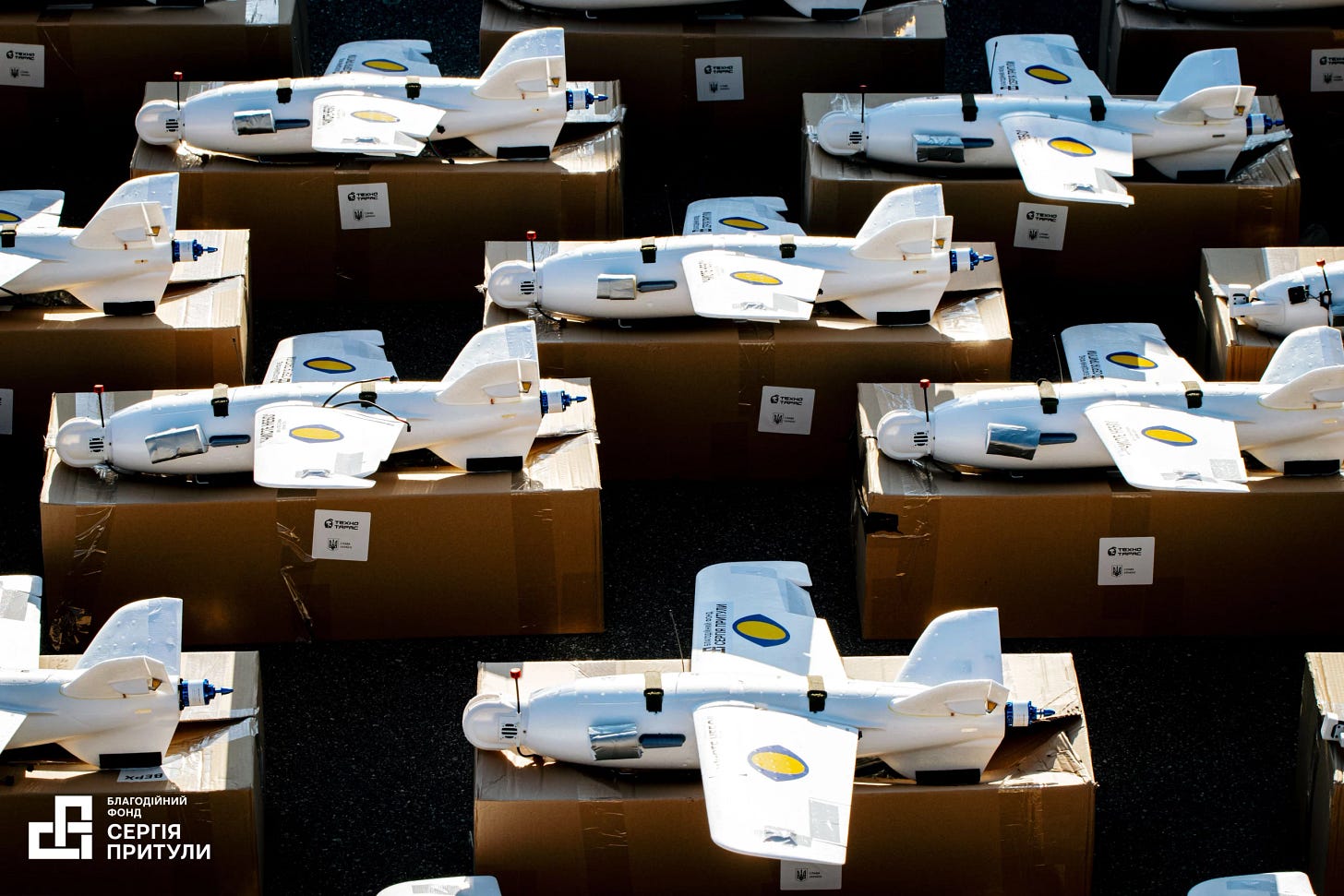Drone warfare in Ukraine: Mavic 3 alternatives, Shahed threats, and interceptor UAVs
Three key stories of the week: June 11 - 18, 2025.

Shahed drones continue to make headlines, especially over the past week, as they are now being deployed in the context of two active wars. Iran has been using Shaheds extensively against Israel. However, this is not expected to impact Russia’s ability to strike Ukraine with hundreds of these and similar attack systems.
What is urgently needed—not only for Ukraine, but globally—are new, low-cost drone interceptors capable of destroying these high-speed attack drones. The trend points toward their future dominance in air and missile defense.
Thank you for reading and supporting my work!
The Global Rise of Shahed-Type Drones
During the last week, Russia has been launching hundreds of Shahed and similar drones at Ukraine. On June 17, Ukraine was hit by 440 drones and 32 missiles.
C4ADS estimated that Russia paid $1.75 billion for the Shahed technology, equipment, source code, and 6,000 drones.
This way, Russia was able to manage its own supply chain and expand the scale and frequency of its attacks. According to reports, between January 2023 and June 12, 2025, a total of 34,014 drones were launched.
As of May 2025, Russia reached a daily production rate of approximately 170 Shahed loitering munitions and decoy drones, with plans to increase output to 190 per day by the end of the year.
Center for Strategic & International Studies named Shahed the most cost-effective munition in Russia’s firepower strike arsenal. Even though Shahed’s only hit their target less than 10 percent of the time, their low cost means Russia can fire mass salvos almost daily, wearing down Ukrainian air defenses and terrorizing the population (read more in my newsletter here).
On June 18, Ukrainian analyst Serhiy FLASH Beskrestnov wrote on his Telegram that for the first time, a Shahed drone equipped with a camera, a direct radio-control system from Russia, and an artificial intelligence module (machine vision) was detected. The development of such a Shahed had been known for some time, but this is the first recorded instance of its use.
The radio modem allows the Shahed to be controlled from up to 150 kilometers away—from Russian territory or the front line—or from even greater distances if airborne relays are used within Ukrainian airspace.
He also warned that if things continue this way, Russia could obliterate Ukraine with Shaheds. Ukraine’s main focus must be on the mass production of interceptor drones, training troops across the country to use them, along with electronic warfare (EW) and light aviation.
Ukraine is working on deploying large numbers of interceptor drones to shoot down Russian attack drones, but it needs additional financial resources to do so, President Zelensky said while speaking at the G7 summit in Canada. According to him, the new interceptors are important not only for Europe, but also for the Indo-Pacific region, as well as for Japan, Canada, and the United States.
It was also reported that Iran had likely launched several hundred drones at Israel over the five days since Operation Rising Lion began. On June 16, Iran unveiled a new “suicide drone” which it calls the Shahed 107. Official specifications have not been disclosed, except for one — a claimed flight range of up to 1,500 kilometers. Judging by the published images, the device is equipped with a turboprop engine, has an X-shaped tail, and a rectangular wing. Mechanization is visible on the wing, most likely an aileron.
The Shahed-107 drone has already appeared in the public information space, although its images have not been published before.
In particular, in January 2024, Sky News reported that several such drones could have been transferred to Russia as part of one of the agreements between Moscow and Tehran.
Iran’s extensive use of Shahed drones against Israel is not expected to affect Russia’s ability to use these drones in large numbers, as Russia now produces most of the drones derived from the Shahed at home and has “spun off more [and] more variations from the initial Iranian designs”.
On June 15, Ukraine’s military said it had attacked a Russian drone factory in the city of Yelabuga in Russia’s Tatarstan region, which is around 1,000km from Ukraine. The so-called Alabuga Special Economic Zone hosts a factory producing Shahed-type long-range attack drones as well as other reconnaissance drones, and has been repeatedly targeted by Ukrainian forces since its launch in 2022.
During the Paris Air Show, Europe’s biggest missile manufacturer, MBDA unveiled its proposal for what it calls the One-Way Effector, which is an expendable attack drone, similar to Shahed - The WarZone reports. A scale model of the drone was presented at the exhibition; the full-size version will be around 10 feet (3 m) long. It would have a 500km range, and up to 1,000 units per month could be produced. The key attributes of the expendable attack drone will include its low cost, allowing large numbers of them to be sent against an enemy’s air defense network and saturate it. Unlike the Shahed, which is typically powered by a piston engine, the MBDA product uses a jet engine in its basic form. This will give it a maximum speed of almost 250 miles per hour, compared to around 115 miles per hour for a propeller-driven Shahed, making it tougher to intercept.
How Drones Are Becoming Part of Ukraine’s Air and Missile Defense
Unmanned aerial systems are intercepting an increasing number of aerial threats. The trend points toward their future dominance in air and missile defense.
Keep reading with a 7-day free trial
Subscribe to Ukraine's Arms Monitor to keep reading this post and get 7 days of free access to the full post archives.



